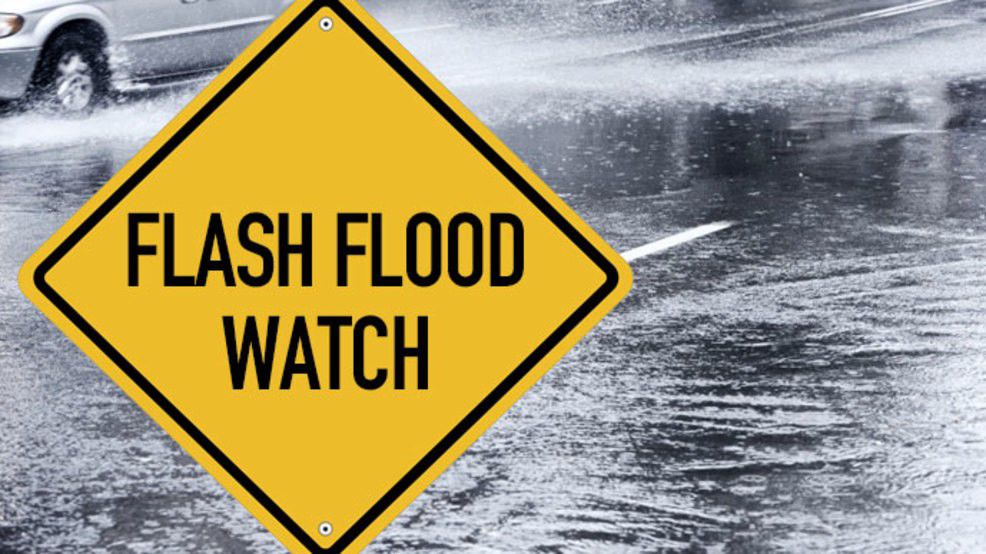When authorities issue a flash flood warning, it demands serious attention. These alerts aren’t casual suggestions — they signify that fast-moving floodwaters are either imminent or already occurring in your area.
In this post, we’ll break down exactly what a warning means, how to stay safe, and what’s ahead — with a look at Phoenix weather and weather tomorrow forecasts for you to watch closely.
What Is a Flash Flood Warning?
First, it’s important to understand the difference between a watch and a warning:
- A flash flood watch means conditions are favorable for flash flooding — stay alert and be ready to act.
- A flash flood warning means a flash flood is happening or will happen imminently in the warned area. If you are in that area, you must take action immediately.
Flash floods can develop quickly — sometimes within minutes — especially following heavy downpours, storms that stall, or rapid runoff in narrow terrain.
Why Flash Floods Are So Dangerous
Even a seemingly small amount of moving water is dangerous:
- Six inches of rapidly moving water can knock a person off their feet.
- One foot of fast-moving water can carry away a small car.
- Roads covered by water may hide damage and sharp drop-offs — what looks like a shallow puddle could be terribly deep.
Because of how fast water moves and how unpredictable flooding paths can be, the National Weather Service often emphasizes: move to higher ground as soon as possible.
How to Stay Safe: Before, During & After
✅ Before Flooding Happens
- Stay informed: monitor local weather forecasts, alerts via NOAA Weather Radio or mobile apps.
- Prepare an emergency kit: water, nonperishable food, flashlight, batteries, first aid kit, battery-powered radio.
- Know the landscape: identify high ground and safe spots in your community. Be aware of dry washes, culverts, and drainage paths.
- Move valuables and essential items to higher levels in your home.
- Consider flood insurance — it often takes 30 days to take effect, so don’t wait until flooding is imminent.
⛔ During a Flash Flood Warning
- Head immediately to higher ground if you are in the warned area. Don’t wait.
- Do not walk or drive through floodwaters. If your car stops in rising water, abandon it only if safe to do so and move to higher ground.
- Stay out of basements or low levels; rising water can trap you. If higher levels are not accessible, a roof may be your only option — but avoid attics without exits.
- Avoid downed power lines and electrical wires in floodwaters. The water may be energized.
- Follow directions from local authorities. Evacuate if ordered; don’t wait.
🛠 After the Flood
- Return home only when authorities deem it safe.
- Avoid walking through standing water — it can be contaminated or conceal debris.
- Disconnect utilities and appliances before entering flooded areas if you can safely do so.
- Clean and disinfect all items that came in contact with floodwater — it often carries sewage, chemicals, and toxins.
Phoenix & Southwest Outlook: Flash Floods on the Radar
Even in the desert, flash floods occur — especially when heavy tropical moisture surges in. Arizona has already been flagged for risk from such events.
Phoenix weather is already under watch. A surge of tropical moisture tied to remnants of storms like Hurricane Priscilla is pushing inland, raising the risk of flash flooding in dry washes, canyons, and flood-prone areas.
To illustrate: in recent days, areas around Tempe saw isolated flooding, particularly along U.S. 60 and near Loop 101, after heavy localized downpours.
Local alerts in Phoenix show active flash flood warnings in the East Valley, Buckeye, Avondale, Deer Valley, and central neighborhoods — significant zones for many residents.
The weather tomorrow (for Phoenix and surroundings) stays risky. Storms are expected to intensify midday and evening, especially near higher terrain and desert edges. Multiple days of rainfall could saturate the ground and heighten flood risk.
✅ What You Can Do Now
- Stay updated on local alerts regarding flash flood warnings and watches via your phone or NOAA/Weather apps.
- If you live in or travel through areas with flash flood history — near washes, ravines, or desert canyons — plan alternate routes.
- Avoid parking or camping near dry streambeds or near drainage channels.
- Be ready to move quickly. If severe rainfall begins, don’t wait for flooding to start — reposition to safe ground early.
- At night, be extra cautious — floods are harder to see in the dark.
🧭 Final Thoughts
A flash flood warning is serious — it’s a signal to act, not wait. Even deserts like Phoenix can face sudden, dangerous flooding when conditions align. With heavier tropical moisture pushing into the Southwest, the threat is real.
Outlook in Phoenix and nearby regions calls for rainfall, thunderstorms, and possible flare-ups of flash flooding over the next few days. Watching for sudden changes in weather, having a plan, and staying safe remain your best defenses.
When water begins moving, avoid low spots, stay elevated, and always remember: it only takes inches to cross a barrier, and only minutes for disaster to strike. Stay safe and weather-smart.
